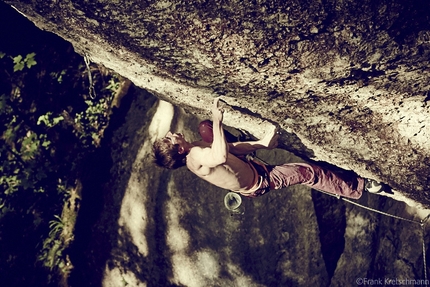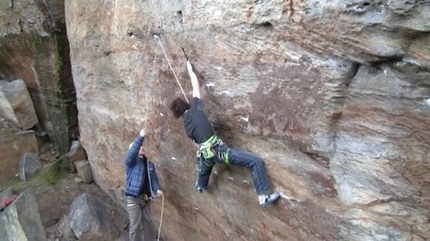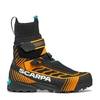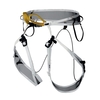Runout for breakfast: climbing in Labské Údolí, Czech Republic
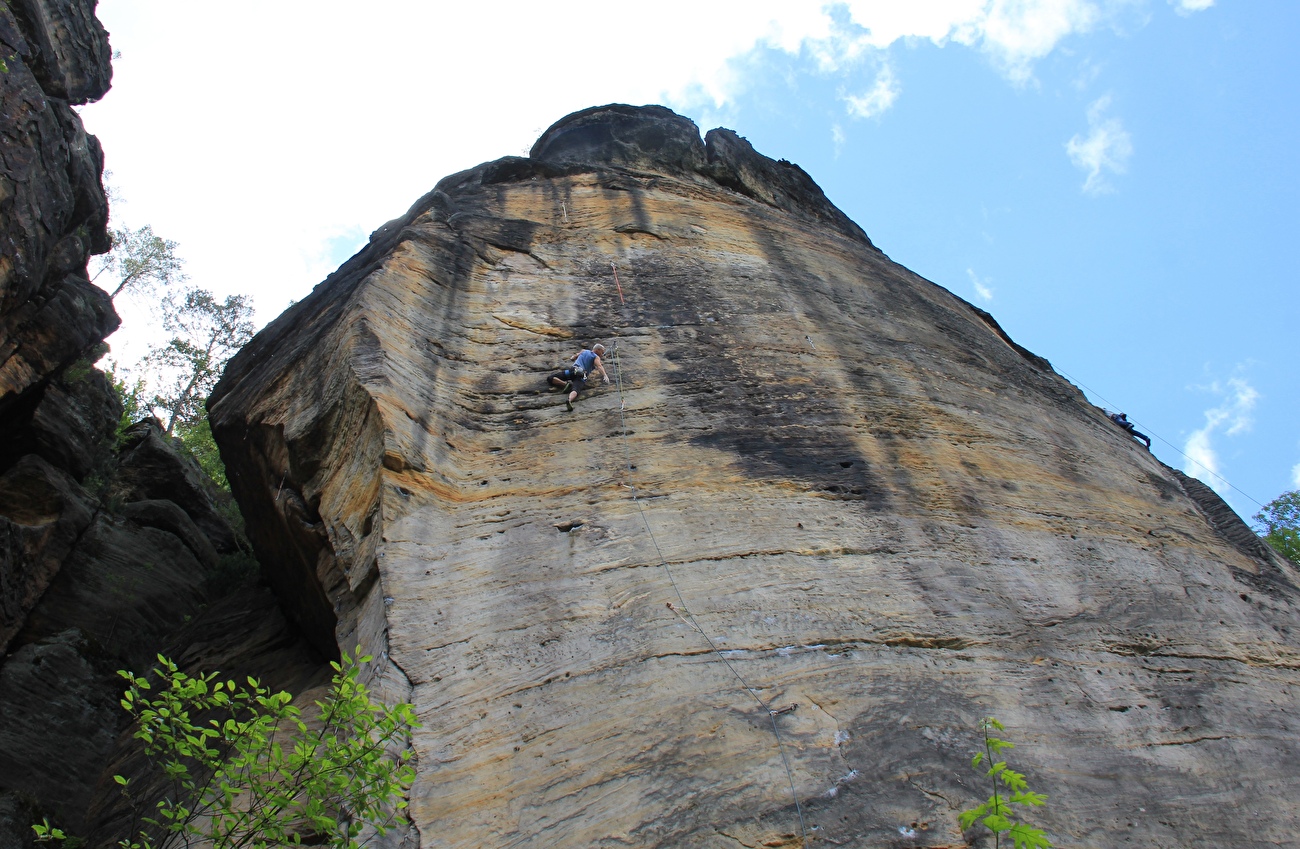
 1 / 9
1 / 9 Maria Almudena Claassen, Piero Ronzani
Maria Almudena Claassen, Piero Ronzani
One positive aspect of our lives as researchers and passionate climbers is how relocating every few years catapults us into new landscapes, pushing us out of familiar terrain and into fresh challenges. It has made us rethink how climbing areas get branded with stereotypes that often don’t entirely reflect reality. Take Scotland, for instance—known for its trad epics, yet hiding brilliant sport crags popular among locals. Or the sandstone towers of Germany’s Saxony, synonymous with traditional, bold adventures, where knots are tied in slings, while just across the border in the Czech Republic, Labské Údolí (or Labák), quietly defies expectations.
When we ventured into Labák, located along the Elbe river (Labe in Czech), we arrived with open minds and left with something that challenged our assumptions. This hidden gem is a place where tradition and modernity exist in harmony. Here, sandstone pillars rise from both banks of the river, connected by a little ferry, and hold a history as layered as the rock itself. The Czechs inherited strict climbing ethics from Saxony, where regulations banned—among other things—chalk, metal protection devices, and top-down bolting. Routes that could not be protected with knotted slings and ropes were fitted with hand-drilled metal rings, often spaced 5 or more metres apart. Yet by the mid-90s, sport climbing had seeped into the cracks, with bolds threaded alongside the old-school test pieces. One rule that stubbornly survives to this day is ground-up bolting—a tradition that, in our opinion, preserves the character and flow of climbs, making them feel more like Alpine multi-pitches than typical sport routes.
Labák’s climbing unfolds in two distinct characters, divided by the river. The right bank (Belvedere side) sticks more to tradition—long, adventurous routes of up to 70-80 metres, sparse protection, and a chalk ban to preserve the rock’s natural look. Here, airy runouts demand focus, and the climbing feels like stepping into another era. Instead, the left bank more often offers shorter, quasi-sport routes with better bolting that do not require the placement of additional gear.
The canyon forms a T-shape, its walls sculpted into aesthetic towers with high plateaus, terraces, and bands that create surreal silhouettes. The quality of the sandstone is a revelation—hard and solid with a rougher texture than Fontainebleau—and provides sloping arretes, sharp crimps, and smooth faces that demand trust in your feet. The routes vary from technical slabs to steeper endurance routes, but always demanding technique over strength. The friction is amazing.
One quirk lies in the grades. For some years after WWII, the German and Czech climbing communities evolved in parallel but isolated from one another. While Germany expanded its grading system to accommodate harder routes, the Czech system was capped at VII (roughly UIAA 7), leaving harder routes sandbagged under the same label. The guidebook—the newest version forthcoming in 2025 in two volumes, one for each side of the river—harmonises these grades, includes partial English translations, and indicates danger and route quality with helpful symbols. In our experience, it is easier to find safer routes in the mid-high grades—7b and harder—where bolts often appear with more generosity to ensure protection for harder sections. There are also lots of king lines in the eigth grade or higher.
Off the rock, Labák casts its own kind of spell. It is not the Alp’s grandeur but something more intimate: a wild, moss-draped canyon where cold streams allow for a post-send dip and mist clings to the river at dawn. At weekends, vans line the riverbank in the village of Dolní Žleb and evenings gather at U Kosti—the lone climbing bar reached by a cobbled road—where beer is cheap and food is hearty. Coming from Berlin, a city with over 15 climbing gyms where climbers blur into anonymity, the climbing community here felt alive and vibrating. The nearby city of Děčín lingers in faded Austro-Hungarian elegance, its peeling pastels whispering of time passing slowly. Tradition and transformation don’t clash here; they layer like sandstone strata.
Who will love it? Those who find joy in alpine-style multi-pitch terrain, who don’t mind studying a guidebook like a treasure map, and who appreciate a place where every pitch can be a small adventure. As outsiders who stumbled upon the magic of Labák, we feel compelled to share it with the wider climbing community. Its reputation for bold runouts isn't wrong—local climbers proudly embrace this—but it's incomplete. We discovered astonishing modern bolted routes and surprisingly sporty lines hiding in plain sight.
So if you visit Labák, do so with the utmost respect for the environment and the active local community. Study each route from the ground, judge its protection before commiting, and let the canyon’s quiet rhythm pull you in. And if you do spend some time here, you may find yourself doing runouts for breakfast, your breath slow, your world small, while the forest hums its quiet concert around you.
- Maria Almudena Claassen & Piero Ronzani, Berlin



 Copia link
Copia link


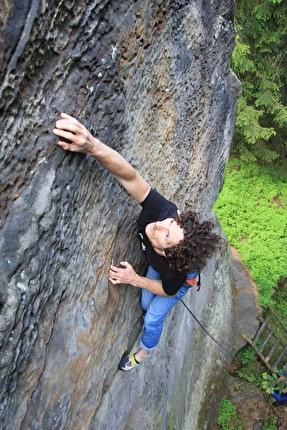
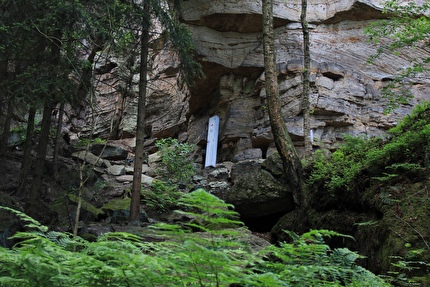
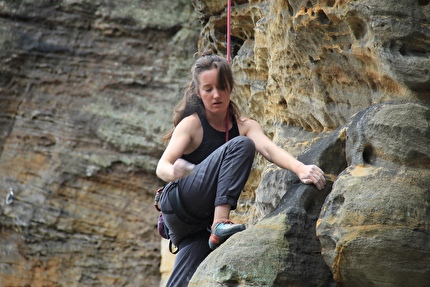
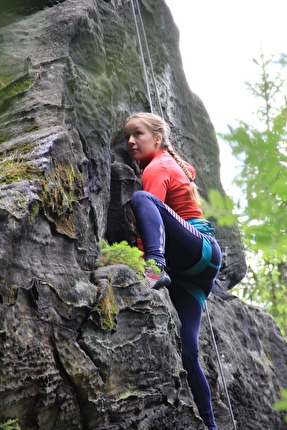
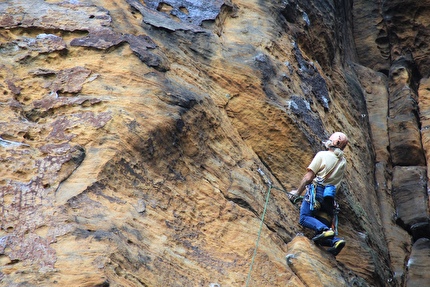
 See all photos
See all photos